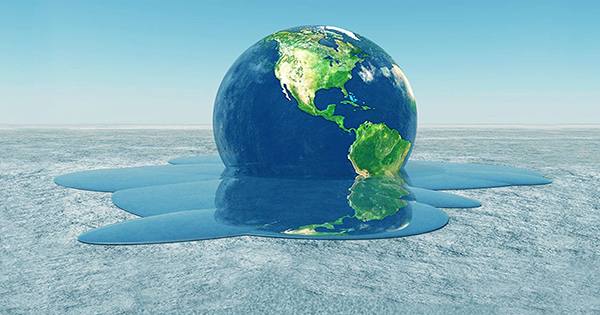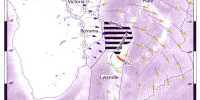Another year, a climate record was broken. Globally, 2020 recorded as the warmest year of all time, with 2016 being the coldest condition in the Pacific Ocean – known as La Nina – as it began to rise in the second half of the year.
The Earth’s average surface temperature in 2020 was 1.25 degrees Celsius above the global average between 1850 and 1900 – a data that may be, but part of a continuous, ward upward trend that is largely driven by greenhouse gases from human activity.
Limiting global warming to 1.5 degrees Celsius can help avoid some of the harmful effects of climate change. This target will be featured in the COP 26 talks scheduled for Glasgow in November 2021.
However, whether the earth warms up to 1.5 degrees Celsius or 4 degrees Celsius, it does not translate into an equal amount of warmth for everyone. Previous studies with climate models have shown that the United States of the Arctic, central Brazil, the Mediterranean basin, and the mainland may be much warmer than the global average.
So what could that mean for you in the years to come? The figures for “global average temperatures” and “regional hotspots” are abstract concepts – helpful for policymakers, but not something that anyone can actually feel. What’s more, temperature estimates from global climate models are typically for wild or agricultural landscapes, which have averaged hundreds of square kilometers over the decades.
These assumptions have moved far beyond the conditions we would face on city streets, inside the workplace, in public spaces, and in our homes. Nevertheless, these are places where climate change will make decisions about health, comfort and productivity during more intense heat waves.
Feeling the heat
One way to bridge, the gap between the climate model and the real world is to draw personal memories of the extreme heat of the past. Stop thinking about the highest temperature you have ever felt outside in the shade. For me, it was 43 degrees Celsius in a suburb of Melbourne, Australia. It felt hot, but on August 16, 2020, it was much lower than the reliably recorded maximum of (-54.4 degrees Celsius) in Death Valley National Park, California. How about the hottest you have ever felt indoors? If I ignore the saunas, my Ghana was inside a house in Accra. The house did not have wooden walls, a metal roof and air conditioning. The temperature here has reached 38 degrees Celsius. Although it was lower than Melbourne was, with very little ventilation and humid air, the heat felt calm.
The highest outdoor temperature in the UK measured at 38.7 degrees Celsius on 25 July 2019 at the Cambridge University Botanic Garden. According to the UK Met Office analysis, global temperatures that reach 4 ° C above pre-natural levels could reach 2060. The climate at the postcode level assumes that global warming can bring 4 Cam C temperatures to 43 degrees Celsius in Cambridge. I can now recall what it was like to be in suburban Australia and realize that it could be Cambridge in forty years.
However, on the hottest summer days in Cambridge in the 2060s, this weather involved weather models with average temperatures from weather stations. They are located away from artificial heat sources and in many places, including grasses and plants. Asphalt surfaces and high-density city centers typically behave very differently in several degrees warm and rural weather stations.
Even when climate models simulate temperatures for urban areas, estimates can simplify in other ways. To produce an average of monthly temperatures, the models can smooth individual day peaks and holes. Urbanization can stabilized at current levels and possible steps that cities can take to adapt to rising temperatures – such as ignoring more green spaces or reflective roofs.
Complex variations in temperature between roads are still unresolved. This means that even sophisticated models probably underestimate the actual intensity of future warming in urban areas.














